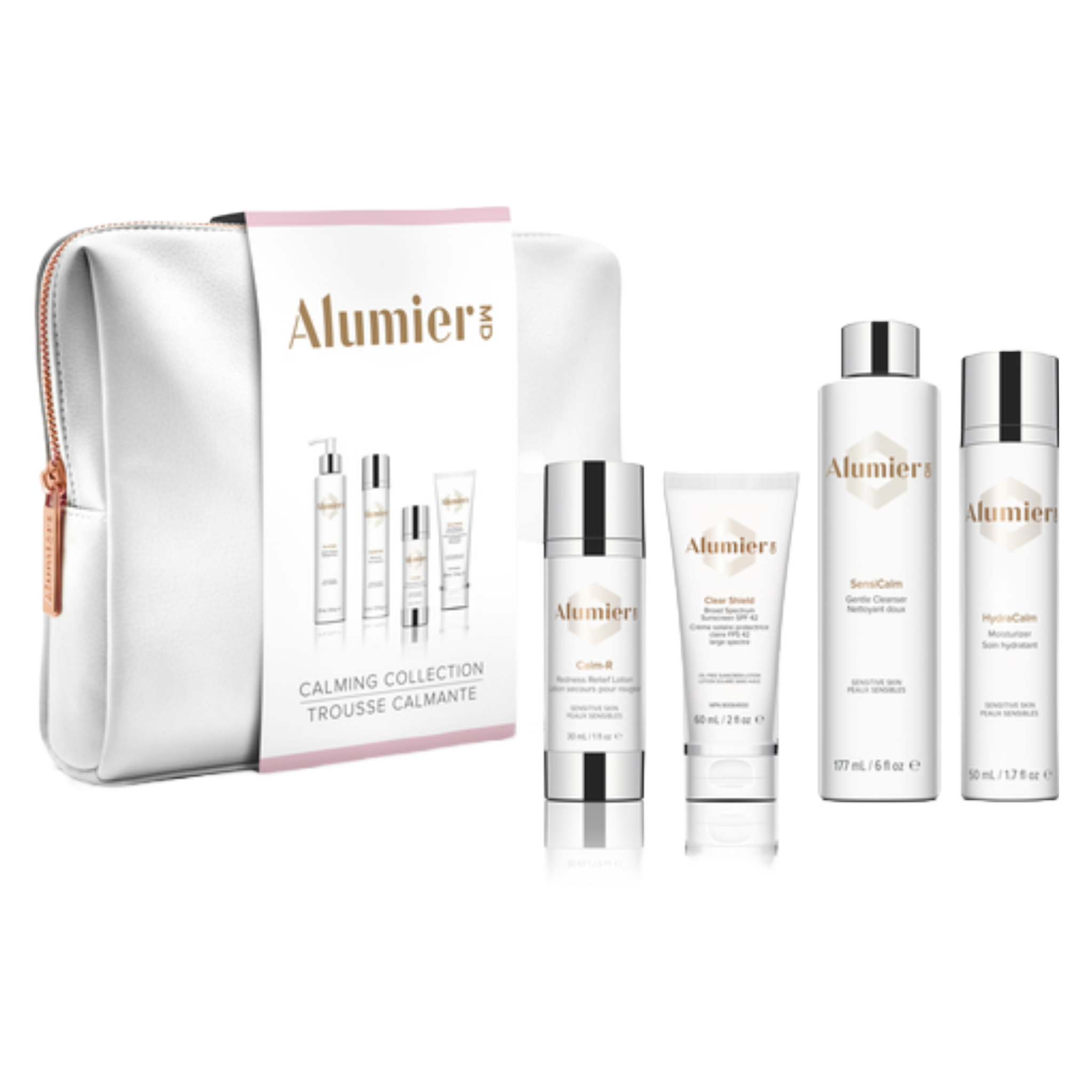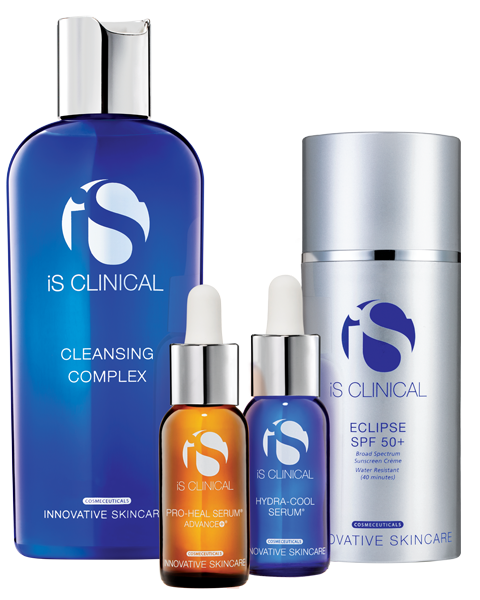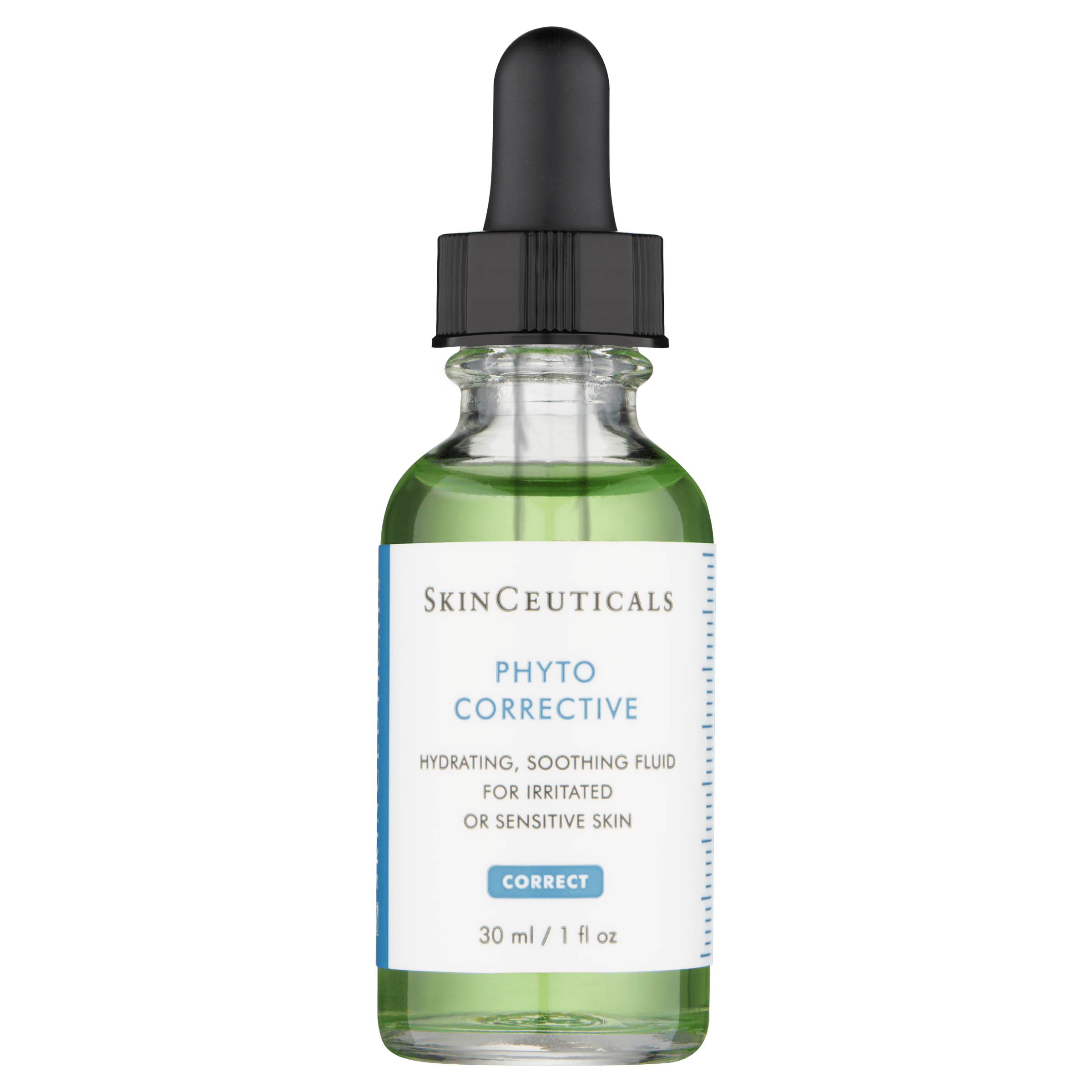Rosacea can feel really overwhelming to deal with, whether you’re years or just days into your diagnosis, or even if you’re looking for more information prior to getting a diagnosis. It’s thought that around 1 in 20 people experience rosacea in the UK [1] so it’s not uncommon to experience its symptoms in your lifetime. And symptoms can be incredibly frustrating, which I experience first-hand, even as a beauty editor. Although it takes time to identify your triggers and create your ideal treatment plan, trust me when I say it’s worth the effort. Rosacea feels far less challenging if you feel somewhat in control of it.
The great news is that there is lots you can do at home to help deal with the skin condition — and they are far from complicated. April marks rosacea awareness month and we’ve gathered your ultimate guide to understanding the condition and getting to the bottom of treatment.
There is a lot of information here, but rather have it in one handy place than have to trawl the internet for it all. Save this to refer back to when you’re in need of extra support.
What is Rosacea?
Rosacea is a chronic inflammatory facial skin condition characterised by redness, flushing, blemishes, a thickening of the skin, and in some cases, eye irritation.
The condition is more common in women than men, and it’s said to be more common for those with fair skin [2], however, this could in part be due to the misdiagnosis of rosacea in Black and brown skin. Common misdiagnoses include allergic reactions and seborrheic dermatitis.
There are four subtypes of rosacea, which makes it a little easier to understand.
Erythematotelangiectatic rosacea - The first is erythematotelangiectatic, which presents as persistent redness and flushing, typically on the central zone of the face. You may also notice visible broken blood vessels, however this isn’t the case for everyone. People with moderate to severe rosacea may find that they have a burning and stinging sensation.
Papulopustular rosacea - The second subtype is papulopustular rosacea, often referred to as acne-rosacea due to it presenting with blemishes. However, its treatment options are very different to that of acne so getting a diagnosis is important. Papules (small, red bumps) and pustules (small red bumps that have a small white head) commonly found on the cheeks. This often occurs along with redness and flushing of erythematotelangiectatic.
Phymatous rosacea - Next, is phymatous rosacea, which is the thickening of the skin. Although rosacea in general is more common in women than men, this subtype is more common in men [3]. This can also present with enlarged pores and even surface nodules. In severe cases, you’ll be able to notice a large, thickened, bumpy and red nose.
Ocular rosacea - Finally, ocular rosacea, as the name suggests, is that of the eyes. It’s essentially inflammation of the eyes, which can cause irritation, a feeling that you have something in your eyes, dry eyes, redness and inflammation of the eyelids( blepharitis). It’s thought that a staggering 58-72% of people will get manifestations of ocular rosacea. Interestingly, you can get ocular rosacea even if you only have mild rosacea of the skin.
Symptoms of rosacea
Rosacea symptoms vary significantly from person to person, which is worth bearing in mind when it comes to comparing your condition to anyone else’s.
Main symptoms can include:
Redness and flushing
The main tell-tale sign that you’re experiencing rosacea is persistent redness and flushing. You’ll find this flushing in the central parts of the face and it can be accompanied with a burning sensation.
In dark skin tones, this redness can be seen as purple or a darker tone to the rest of the skin. Keep an eye out for any changes in colour.
Pimples
Acne-rosacea causes blemishes in the central zones of the face that are regularly self-misdiagnosed as acne. If treated as though it’s acne, sadly, the condition only gets worse as treatment options are completely different.
Sensitivity
You may find that your skin is generally pretty sensitive to things like skincare and makeup products, with a burning sensation when applying certain products.
Broken blood vessels
You might notice small, broken blood vessels on the face, which is also known as spider veins.
Thickening of the skin
You might notice areas like the nose get a little more bulbous appearing with enlarged pores, known as rhinophyma. This tends to be when skin goes untreated for a number of years. This also isn’t common, particularly among women.
Watery, sore, irritated eyes
If you have ocular rosacea, you’ll experience a lot of this inflammation in the eyes. They might feel generally uncomfortable and irritated. You may also get swollen and red eyelids.
Causes of rosacea
Ah, the million pound question: what causes rosacea? Well, experts still aren’t sure. There are studies being conducted to determine the cause but a few theories include a microscopic mite (demodex folliculorum) that lives on everyone’s skin but is suggested to be more prevalent in rosacea sufferers, autoimmune links and systemic inflammation and links with a bug called H pylori.
It’s really important to get a diagnosis from a GP or dermatologist in addition to home treatments.
Triggers of rosacea
When it comes to managing rosacea, finding out what your triggers are and eliminating those as much as possible can be really effective. Common triggers include:
- Sunlight
- Alcohol
- Hot and cold weather
- Exercise
- Stress
- Spicy foods
Of course, eliminating triggers is also easier said than done but it’s useful to understand so that you can combat as many as you have control over. For example, protecting yourself against sunlight with SPF 50 and staying out of direct sunshine during peak hours can reduce symptoms massively.
At-home rosacea treatment
Now onto treatments and skincare. Using a consistent skincare routine at home tailored to your needs can have such a positive impact on your skin and condition, making it a worthy investment.
You may be given a prescription treatment like a topical antibiotic to get your flare-up under control on your initial visit. Although rosacea cannot be cured, there are plenty of treatments that make it manageable at home.
It’s all about protecting that skin barrier, which keeps the good stuff in and the bad stuff out. Calming and soothing ingredients help that inflammation and gentle exfoliation can keep breakouts at bay. Protection is the most important aspect here, though. SFP 50 come rain or shine helps avoid flare-ups and damage caused by the sun.
Rosacea-friendly skincare shopping list

|
| View product |
Sometimes in skincare we need hand-holding, which is absolutely OK (and why we’re here!). If that’s the case for you then getting a step-by-step routine is an ideal place to start. It takes all of the guess-work out of creating a routine and you know you’re in safe hands. Alumier MD’s Calming Collection — consisting of cleanser, serum, moisturiser and SPF — does exactly as promised; working to calm sensitive skin, repair the skin barrier and protect from external stressors.

|
| View product |
Another fantastic kit is the iS Clinical Pure Calm Collection, which features a cleanser, healing serum, calming serum and SPF 50. It’s actually great for all types of skin conditions, from rosacea to acne as well as generally unhappy and sensitive skin. This makes it ideal if you’re not quite sure what you need.

|
| View product |
If you find that your rosacea is, on the most part, under control (meaning you don’t have any really angry blemishes or burning inflammation) then you’ll want to move onto the next stage of treatment by adding in gentle exfoliation. It uses mild exfoliating ingredients to help slough off dead skin cells, reducing breakouts and revealing brighter skin.

|
| View product |
The Phyto-corrective range is a go-to for rosacea as it’s brilliant at quickly calming the skin. It’s ideal if you struggle with both rosacea and hyperpigmentation as it tackles both whilst still being gentle and soothing. This serum does contain fragrance, which most people are absolutely fine with (in fact, prefer it as it’s a nicer experience), but is one to hold off using if you’re experiencing a severe flare-up.
Rosacea FAQs
Who commonly gets rosacea?
It’s more common in women than men in general, however, men are more likely to experience the phymatous subtype of rosacea than women.
Ingredients to avoid for rosacea?
Strong acids like glycolic and overuse of salicylic acid, as well as benzoyl peroxide can exacerbate rosacea. If you’re in a flare, avoid fragrance, alcohol and sodium lauryl sulphate (SLS) for the time being, or until you’ve identified that they aren’t a trigger.
Is sunshine good for rosacea?
In short: no. Sunshine isn’t just not good for rosacea, it is often called the number one trigger and can cause almost immediate flushing and redness.
Does drinking water help rosacea?
We wish the answer was as easy as this. Sadly drinking water alone will not help your rosacea. However, staying hydrated is always a good idea and is recommended.
Does rosacea get worse with age?
This really can depend but you might find that rosacea can get worse (or change in symptoms) during menopause and perimenopause.
Sources:
[1] https://patient.info/skin-conditions/skin-rashes/rosacea
